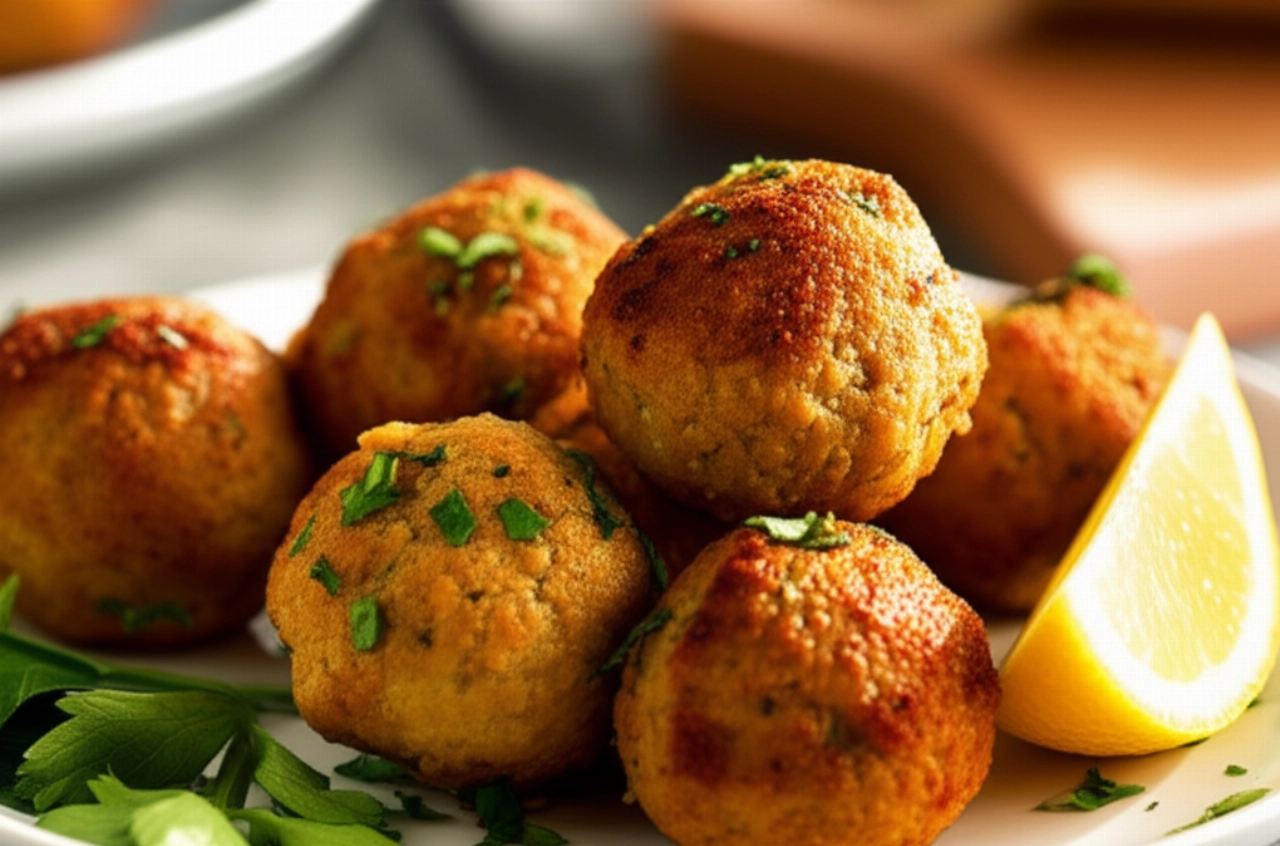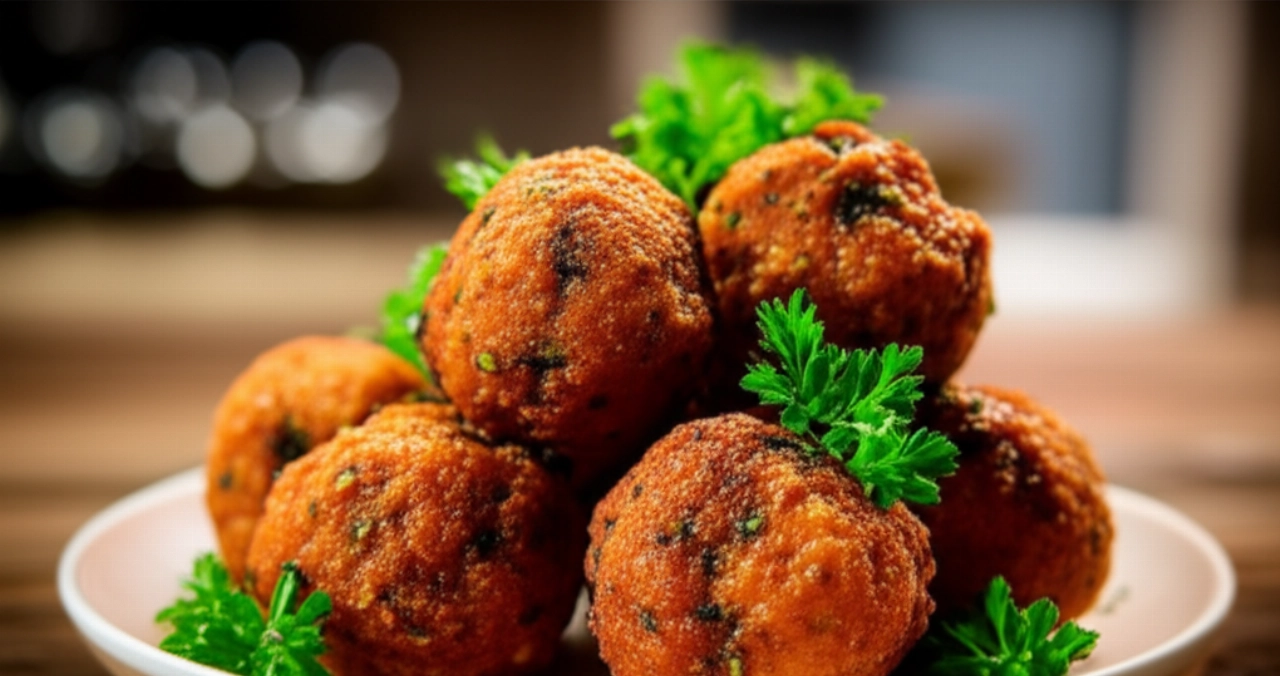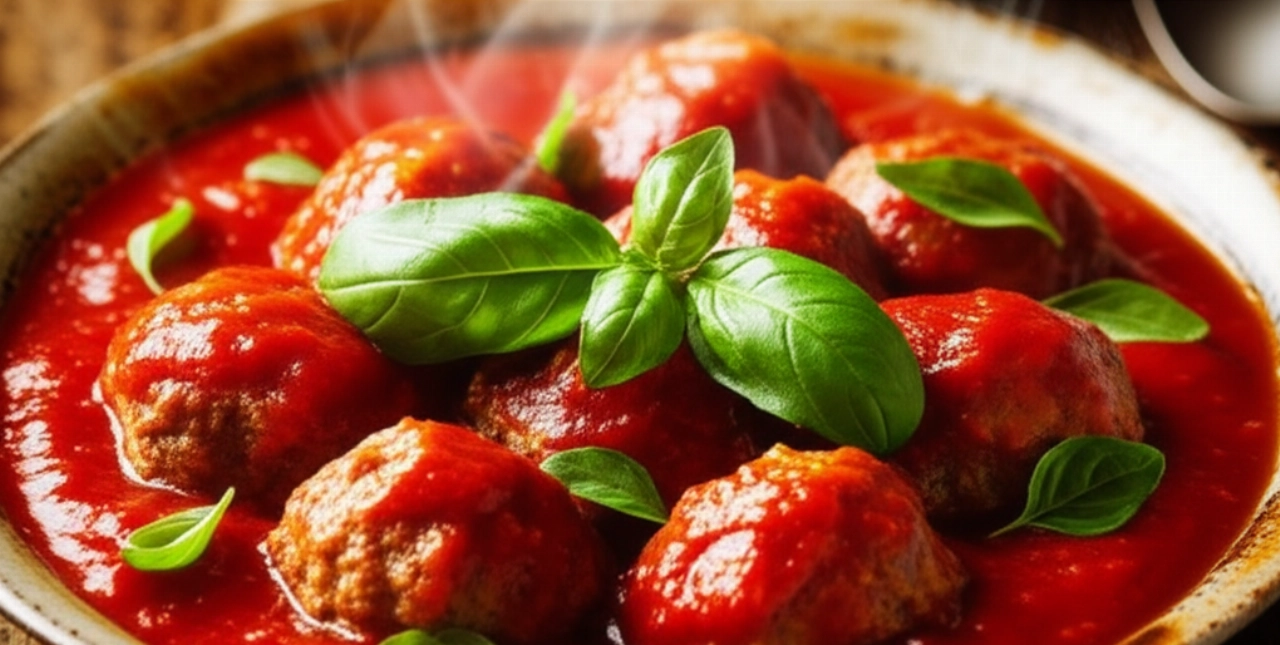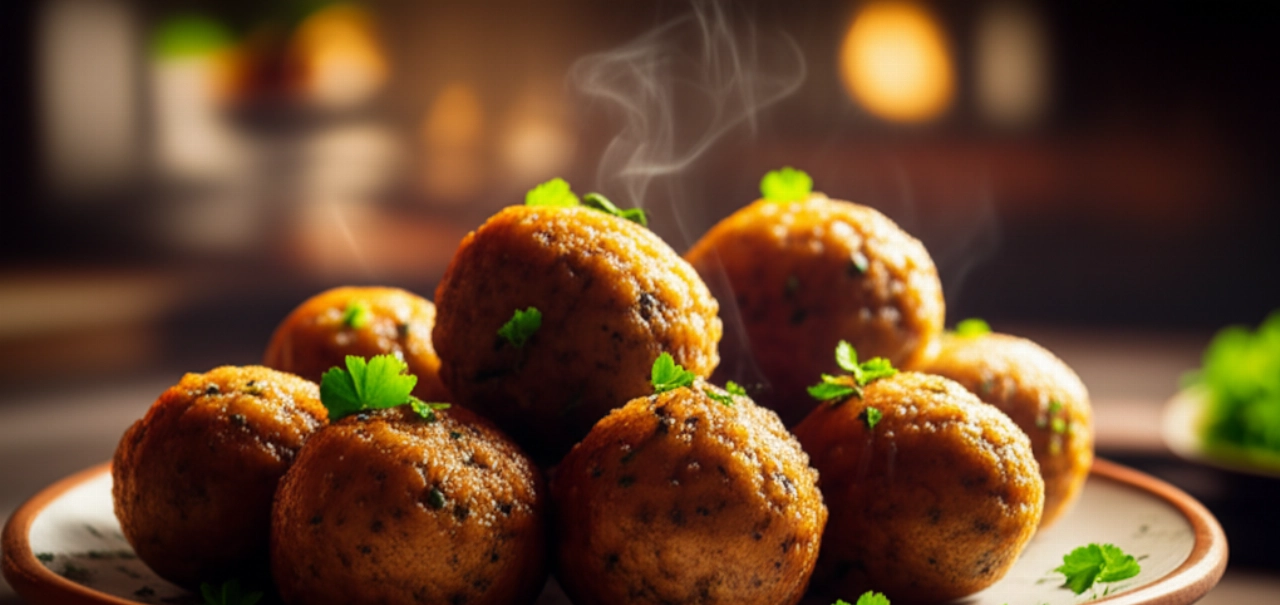Do you dream of bringing to the table a dish that smells of Abruzzo, of tradition, with those irresistible cheese balls that melt in your mouth, enveloped in a rich and velvety sauce?
But how many times have you tried to make them and they fell apart in the sauce, or turned out rubbery and bland? Finding the true recipe for Cacio e Ovo Cheese Balls, the one that guarantees success, seems like a challenge.
Fear not, my friend. You're in the right place. Here at Search Recipes, your trusted chef grandma will reveal all the secrets to preparing the softest, most flavorful, and perfect Cacio e Ovo Cheese Balls you've ever tasted. Success is guaranteed, and so are the applause!
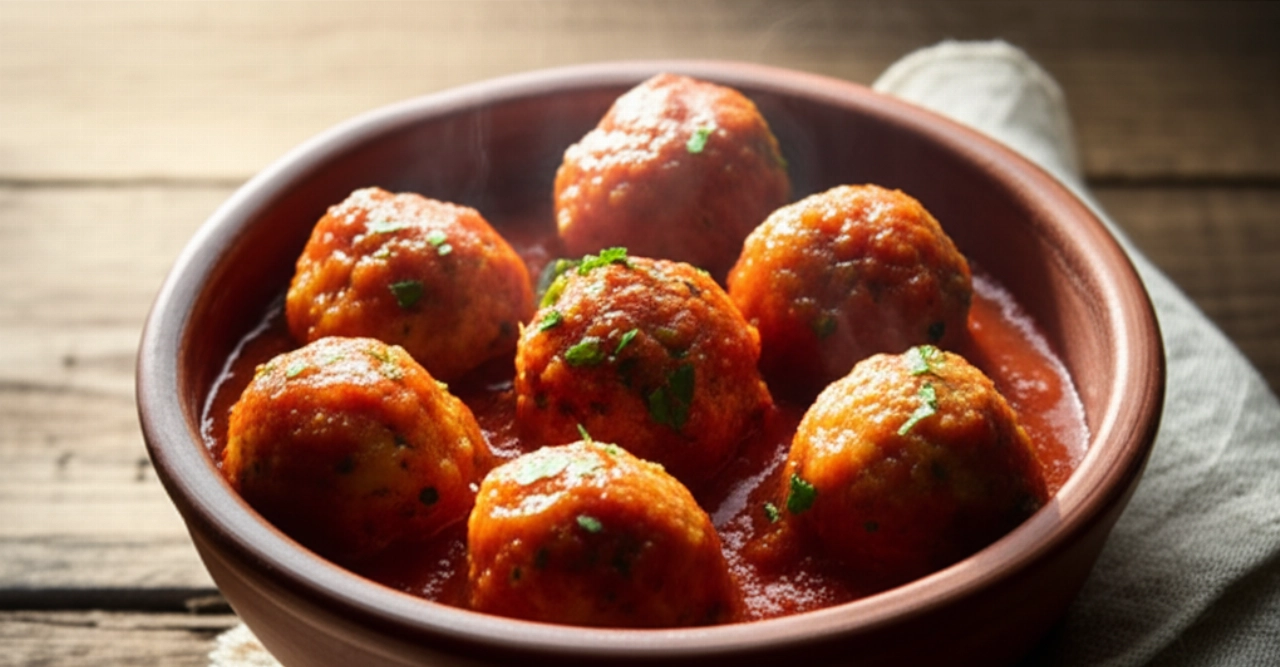
The Secret of Our Cacio e Ovo Cheese Balls: Infallible Softness and Hold
Our promise? Forget about cheese balls that break apart or turn out hard. I'll guide you step-by-step to get incredibly soft Cacio e Ovo Cheese Balls that maintain their perfect shape in the sauce, just like Abruzzese grandma used to make them. The secret lies in the perfect balance of ingredients and a few simple steps that will make all the difference.

Ingredients for Perfect Cacio e Ovo Cheese Balls: The Choice That Makes the Difference
It's not just a list, but a guide to choosing ingredients that will guarantee your success. Every ingredient has its purpose, and understanding it will help you never go wrong.
- Cheese: You'll need a mix of aged Pecorino (for its strong, savory flavor) and Parmigiano Reggiano (for sweetness and creaminess). The ideal proportion is 70% Pecorino and 30% Parmigiano. Do not use cheeses that are too fresh or bland, as they would ruin the authentic taste.
- Eggs: We'll use whole eggs, but the secret is their freshness and the right quantity. They are the fundamental binder that holds our cheese balls together without making them rubbery.
- Stale Bread: This is the true "magic ingredient." Do not use breadcrumbs! Stale bread, soaked and squeezed, provides unparalleled softness and a perfect consistency. Choose homemade bread, even a few days old.
- Garlic and Parsley: Fresh, finely chopped. They add aroma and a touch of freshness that balances the cheese's savoriness.
- Tomato Sauce: A good sauce is the foundation of everything. I recommend our Perfect Tomato Sauce, prepared with ripe tomatoes and a light soffritto. It should be thick and flavorful, ready to welcome our cheese balls.
- Extra Virgin Olive Oil: Good quality, for browning the cheese balls and for the sauce.
- Salt and Pepper: To taste, but be mindful of the cheese's saltiness!
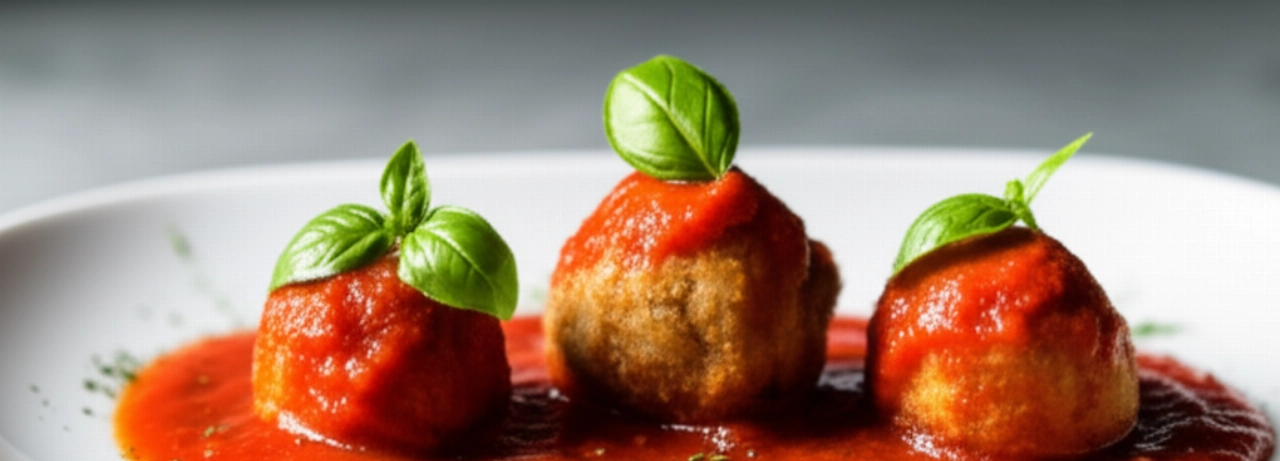
3 Common Mistakes That Ruin Your Cheese Balls (and How to Avoid Them)
I'm warning you, so you won't fall into the most common traps that turn cheese balls from masterpieces into disappointments.
- Using too much dry bread or breadcrumbs: This is the number one mistake that makes cheese balls hard and dry. Soaked and well-squeezed stale bread is the only secret to softness.
- Overworking the dough: The more you work it, the more the cheese releases fat and the eggs get "stressed," making the dough rubbery. Mix the ingredients just enough, without overdoing it.
- Cooking them on too high heat or for too long: Whether in the pan or in the sauce, overly aggressive cooking will make them harden or, worse, fall apart. They should cook gently, absorbing the flavors.
Grandma's Magic Touch: The Secret to Incredible Cacio e Ovo Cheese Balls
My grandma, when preparing her legendary cheese balls, had a secret few know: after soaking the bread, she would squeeze it with an almost reverent delicacy, but with determination. It shouldn't be too wet (because they would fall apart) nor too dry (because they would be hard). The key is to feel the consistency: it should be moist, but not dripping. This small gesture, which seems insignificant, is what guarantees perfect softness and hold during cooking. Try it, and you'll feel the difference!
Let's Prepare Cacio e Ovo Cheese Balls Together: The Step-by-Step Guide
Now that you know all the secrets, let's get cooking! Follow each step carefully, and success will be yours.
- Prepare the Bread: Take about 200g of stale bread (without crust, if too hard) and break it into pieces in a bowl. Cover it completely with lukewarm water (or milk, for an even more delicate touch) and let it soak for 10-15 minutes, until it is completely soft.
- Squeeze the Bread: This is the crucial step! Take handfuls of soaked bread and squeeze it firmly between your hands to remove all excess water. It should be moist but compact. Place it in a large bowl.
- Prepare the Dough: In the bowl with the squeezed bread, add 200g of grated Pecorino and 100g of grated Parmigiano Reggiano. Add 2 whole eggs, 1 finely chopped (or crushed) garlic clove, a nice bunch of fresh chopped parsley, a pinch of salt (just a little, the cheeses are already salty!) and a grind of black pepper.
- Mix: Mix all ingredients with your hands, gently but firmly, until you get a homogeneous and compact mixture. Do not overwork it! It should be soft but not sticky. If it turns out too soft, you can add a tablespoon of breadcrumbs, but only if strictly necessary.
- Form the Cheese Balls: Take small portions of dough (about 20-25g each) and form balls the size of a walnut. Compact them well between the palms of your hands. Place them on a tray as you prepare them.
- Prepare the Sauce: Meanwhile, in a large pan, heat a drizzle of extra virgin olive oil. Add your Perfect Tomato Sauce and bring it to a boil. Lower the heat to minimum.
- Cook the Cheese Balls: When the sauce is gently simmering, gently immerse the cheese balls one by one. Do not overlap them. Cover the pan and let them cook on very low heat for about 15-20 minutes, gently turning them halfway through cooking. The cheese balls will absorb the flavor of the sauce and become incredibly soft.
- Serve: Your Cacio e Ovo Cheese Balls are ready! Serve them hot, drizzled with plenty of sauce and, if you wish, an extra sprinkle of Pecorino. Don't forget the bread for dipping!
Tips and Frequently Asked Questions about Cacio e Ovo Cheese Balls
I've gathered the questions you ask me most often, to clear up any doubts and guarantee you an impeccable result.
- Can I use only one type of cheese?
- Yes, you can use only Pecorino, but the mix with Parmigiano gives a balance of flavors and a softness that I highly recommend. If you use only Pecorino, it might turn out a bit too salty and strong.
- Can the cheese balls be fried before putting them in the sauce?
- The traditional Abruzzese recipe calls for cooking them directly in the sauce. Frying them first would make them crispier externally, but less soft and "melt-in-your-mouth" inside, altering the authentic consistency. I advise against doing so for this recipe.
- Can I prepare the cheese balls in advance?
- Absolutely yes! You can prepare the dough and form the cheese balls even the day before. Store them in the refrigerator, covered with plastic wrap, and cook them in the sauce when ready to serve. You can also freeze them raw, well-spaced on a tray, and then transfer them to a food bag. Cook them directly from frozen in boiling sauce, extending the cooking time a bit.
- Why do my cheese balls break during cooking?
- There are two main reasons: either the bread wasn't squeezed enough (too much moisture), or the dough is too soft (lacks a bit of cheese or a pinch of breadcrumbs, but with caution!). Also, make sure the sauce isn't boiling too vigorously when you immerse them.
There you have it! Now you no longer have just a recipe, but all the secrets to bring to the table a dish that tastes of home, tradition, and love. Your Cacio e Ovo Cheese Balls will be a guaranteed success, a true embrace of Abruzzese flavors.
Don't be afraid to experiment. Cooking is an act of creativity and generosity. But start from this solid base and you'll see that applause won't be lacking. Prepare the bread for dipping, because you'll need it!
Have you tried our recipe? We're very curious to see your masterpiece! Leave a comment below, tell us how it went, or share a photo on Instagram by tagging @CercaRicette.it. If you loved these delicious cheese balls, you can't miss our recipe for Homemade Tomato Sauce or for a first course that pairs wonderfully like Maltagliati with Fresh Tomato Sauce.
